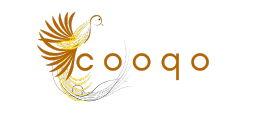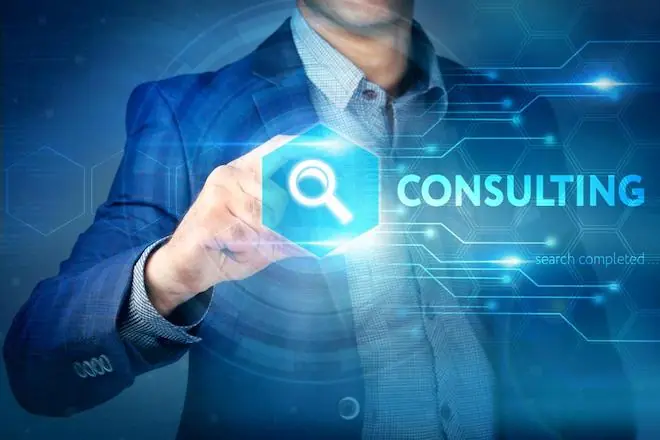In the world of consulting, client relationships are the cornerstone of long-term success. The ability to build and maintain strong, trust-based relationships with clients is essential not only for securing repeat business but also for enhancing your reputation and creating opportunities for growth. A strong client relationship helps to foster collaboration, smooth project execution, and a mutually beneficial partnership. In this article, we explore key strategies for building and nurturing strong client relationships in consulting.
1. Understand Your Client’s Needs and Expectations
The first step in building a strong client relationship is truly understanding their needs, goals, and expectations. Every client is unique, and the ability to tailor your approach to meet their specific needs will differentiate you from other consultants.
How to Gain a Deep Understanding of Your Client:
- Initial Conversations: Spend time in the beginning to ask questions about the client’s business, objectives, challenges, and long-term goals. Understand their vision for success.
- Active Listening: Practice active listening, ensuring that you fully understand both what is being said and what might be left unsaid. Non-verbal cues and underlying concerns often provide valuable insights.
- Ask the Right Questions: Go beyond surface-level questions. Ask probing questions that encourage the client to share their underlying pain points, concerns, and aspirations.
- Clarify Expectations: Set clear, realistic expectations for what can be delivered and by when. Clarifying goals, timelines, and deliverables from the outset will prevent misunderstandings and frustrations down the line.
2. Communicate Clearly and Consistently
Effective communication is at the heart of any strong client relationship. A consultant who communicates transparently, frequently, and clearly is seen as trustworthy and professional.
Tips for Effective Communication:
- Regular Updates: Keep clients informed about the progress of their projects with regular status updates. This reassures them that you are on track and allows for timely feedback.
- Clear Language: Avoid jargon or technical language that may be confusing. Ensure that your communication is straightforward, especially when discussing complex topics.
- Be Transparent: If challenges arise, address them early. Clients appreciate consultants who are honest about issues and proactive in offering solutions.
- Listen Actively: Communication isn’t just about talking—it’s also about listening. Show that you value the client’s feedback by actively engaging with what they say and asking for clarification when needed.
3. Be Responsive and Accessible
In consulting, clients want to feel like their concerns are your top priority. Being responsive to emails, calls, or requests for meetings shows that you value their time and business. Speed and accessibility are key in building trust and maintaining a strong relationship.
How to Be Responsive:
- Set Expectations for Response Times: Let clients know when they can expect a response, whether it’s within 24 hours or during business hours. Make sure you adhere to these timelines.
- Be Available for Questions: Clients appreciate a consultant who is readily available to answer questions or provide clarification. Ensure that you’re reachable during agreed-upon hours and make accommodations when necessary.
- Use Multiple Communication Channels: Be adaptable in how you communicate with clients. Some may prefer email, while others might prefer phone calls or video conferences. Adjust your methods based on the client’s preference.
4. Deliver Value and Results
Delivering consistent, high-quality results is one of the best ways to solidify your client relationships. Clients hire consultants for expertise and solutions, and when you consistently meet or exceed their expectations, you build trust and credibility.
How to Add Value:
- Set Clear Milestones: Break the project into smaller, manageable milestones. This not only helps track progress but also gives clients the sense that they are continuously moving forward.
- Proactive Solutions: Don’t just solve the immediate problem. Identify long-term strategies that can help the client reach their broader business goals and objectives.
- Exceed Expectations: Whenever possible, go above and beyond. Whether it’s delivering ahead of schedule or providing additional insights, showing that you care about the client’s success will leave a lasting impression.
- Leverage Expertise: Regularly share industry insights, trends, or best practices that can benefit the client, even if it’s not directly related to the current project. It demonstrates your expertise and positions you as a trusted advisor.
5. Build Personal Connections
While professionalism is key, developing a personal rapport with clients can help to build trust and loyalty. A strong personal connection makes clients feel more comfortable with you and your advice.
How to Build Personal Connections:
- Take the Time to Get to Know Your Client: Show genuine interest in your client’s personal and professional life. Understand their goals, their challenges, and even their values and interests.
- Find Common Ground: Shared interests or experiences can strengthen a relationship. Whether it’s a mutual passion for a sport, a book, or a specific business challenge, these connections foster a deeper level of trust.
- Be Empathetic: Understand the pressures and challenges your client is facing. Demonstrate empathy by offering support during difficult times and being flexible when needed.
6. Demonstrate Reliability and Accountability
Reliability is a critical component of trust. Clients want to know that they can depend on you to deliver results, meet deadlines, and honor your commitments. Accountability builds confidence and shows that you are a professional who can be relied upon to act in their best interest.
How to Demonstrate Accountability:
- Meet Deadlines: Deliver projects on time, every time. If delays occur, communicate them well in advance and provide solutions or alternatives.
- Own Mistakes: If you make an error, acknowledge it promptly, apologize sincerely, and offer a plan to correct the issue.
- Follow Through: If you make a promise or commitment, follow through on it. Your consistency will help clients feel more secure in working with you again in the future.
7. Be Adaptable and Flexible
In consulting, projects rarely go exactly as planned. Clients may change their needs, timelines, or goals, and your ability to be flexible and adaptable will demonstrate your value and commitment to their success.
How to Be Flexible:
- Adjust to Changes: When clients change the scope or direction of a project, be ready to adapt. Assess the new requirements and adjust your approach accordingly.
- Manage Expectations: Communicate any potential impacts of changes on timelines, budget, or deliverables. Set realistic expectations based on the new direction.
- Stay Calm in Uncertainty: Clients will often look to you for guidance during uncertain or challenging times. Stay calm and offer solutions or adjustments to help them navigate through the situation.
8. Seek Regular Feedback
Feedback is essential to continuous improvement and maintaining strong client relationships. Regularly asking for client feedback allows you to understand their level of satisfaction and adjust your services to meet their needs more effectively.
How to Gather Feedback:
- Post-Project Review: After completing a project, ask your client for feedback on what went well and what could have been done better.
- Surveys: Use surveys to gather structured feedback that provides insights into your performance across various aspects of the consulting process.
- One-on-One Conversations: If appropriate, schedule regular check-ins or debriefs with your clients to discuss progress, gather feedback, and address concerns in real-time.
9. Maintain Long-Term Relationships
Building strong client relationships goes beyond the completion of a project. A great consultant stays connected with clients, even after the project ends, by offering ongoing support and demonstrating genuine interest in their continued success.
How to Maintain Long-Term Relationships:
- Follow Up: Reach out periodically to check in on your client’s progress and offer support. This shows that you care about their success beyond the scope of your consulting engagement.
- Provide Ongoing Value: Continue to offer useful advice, updates, or recommendations on industry trends or opportunities. This positions you as a long-term partner rather than just a service provider.
- Celebrate Milestones: Acknowledge important milestones in your client’s business or industry. Send a congratulatory note or a small gift to show appreciation for the relationship.
Conclusion
Building strong client relationships in consulting is an ongoing process that requires effort, dedication, and strategic thinking. By understanding your client’s needs, communicating clearly, delivering value, being responsive and accountable, and maintaining a personal connection, you can build lasting, trust-based relationships. These relationships not only foster repeat business but also increase your reputation, open doors to new opportunities, and position you as a trusted advisor. The more you invest in your client relationships, the more likely your consulting business will thrive.

